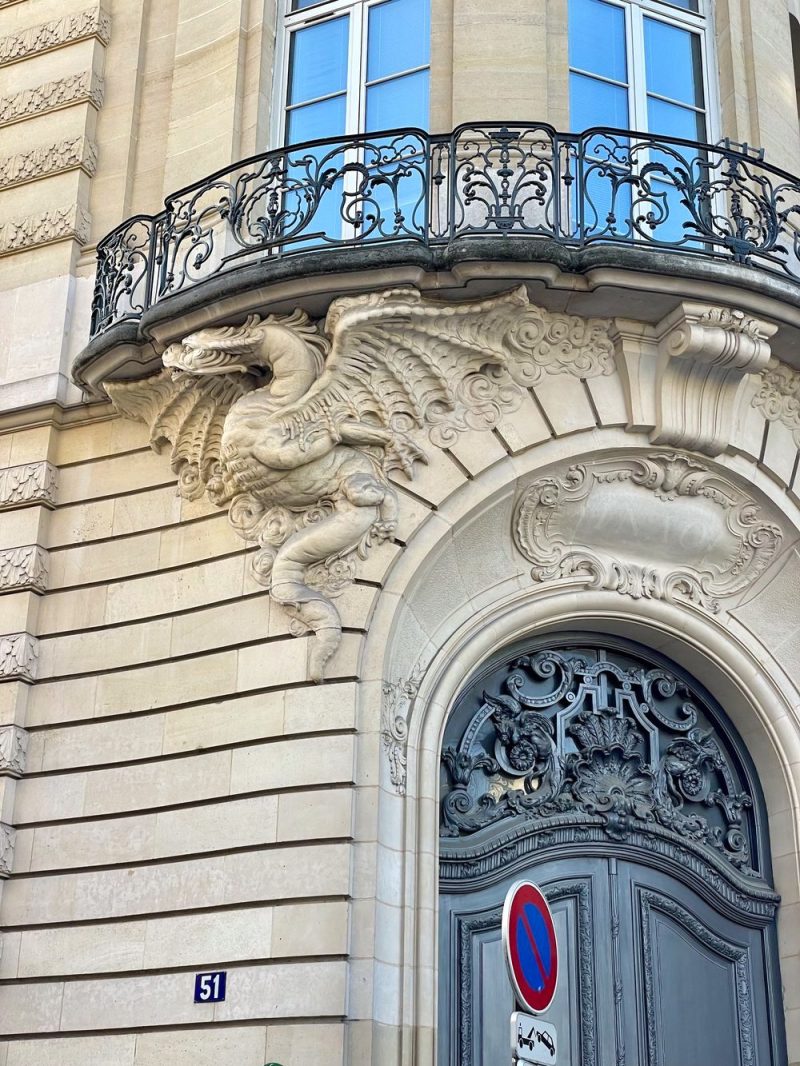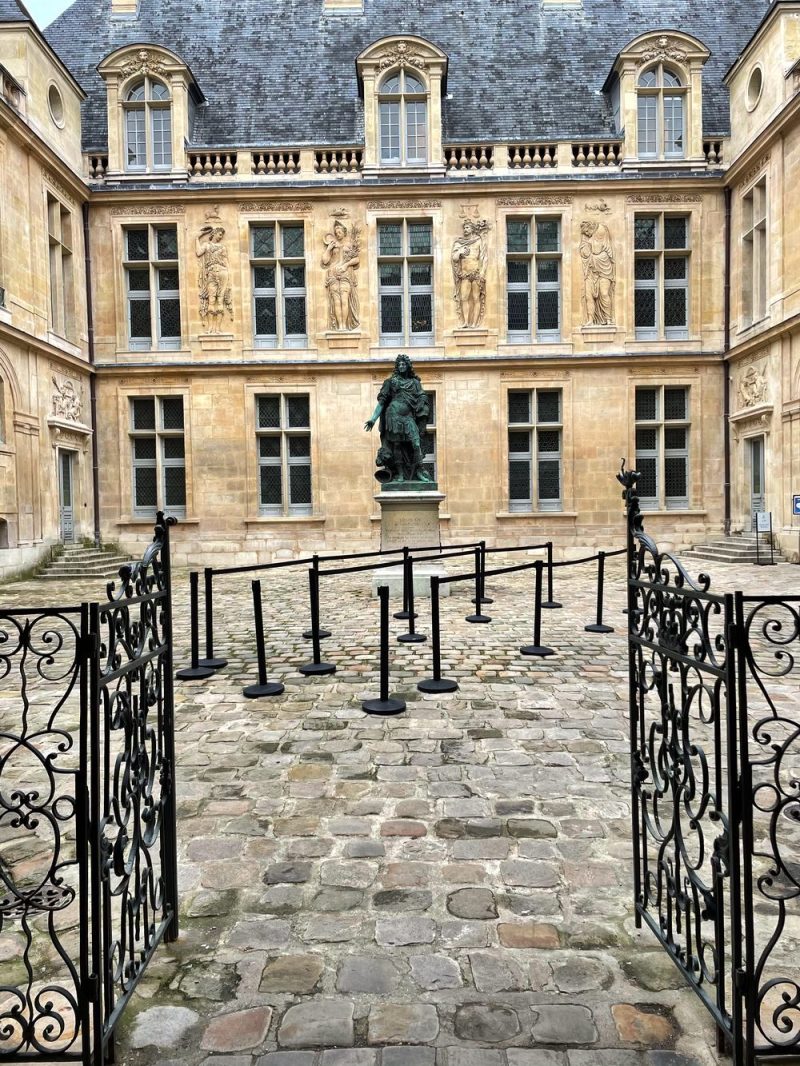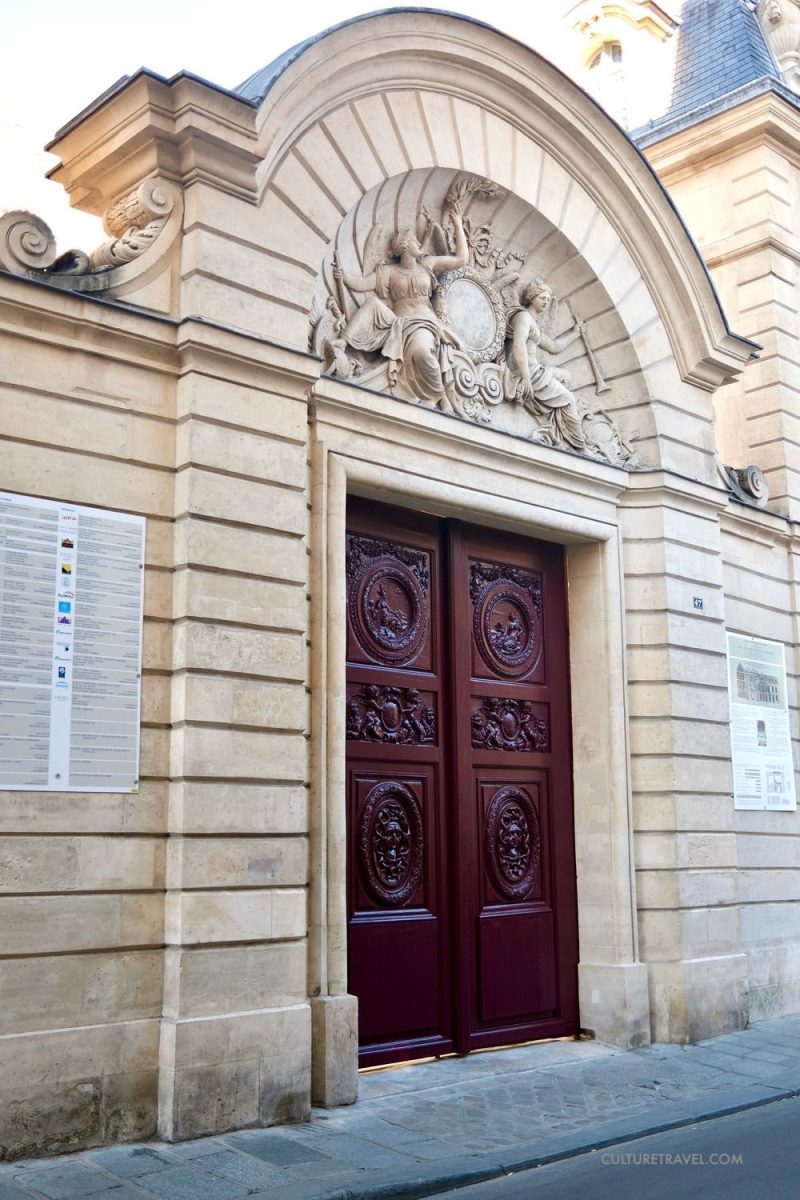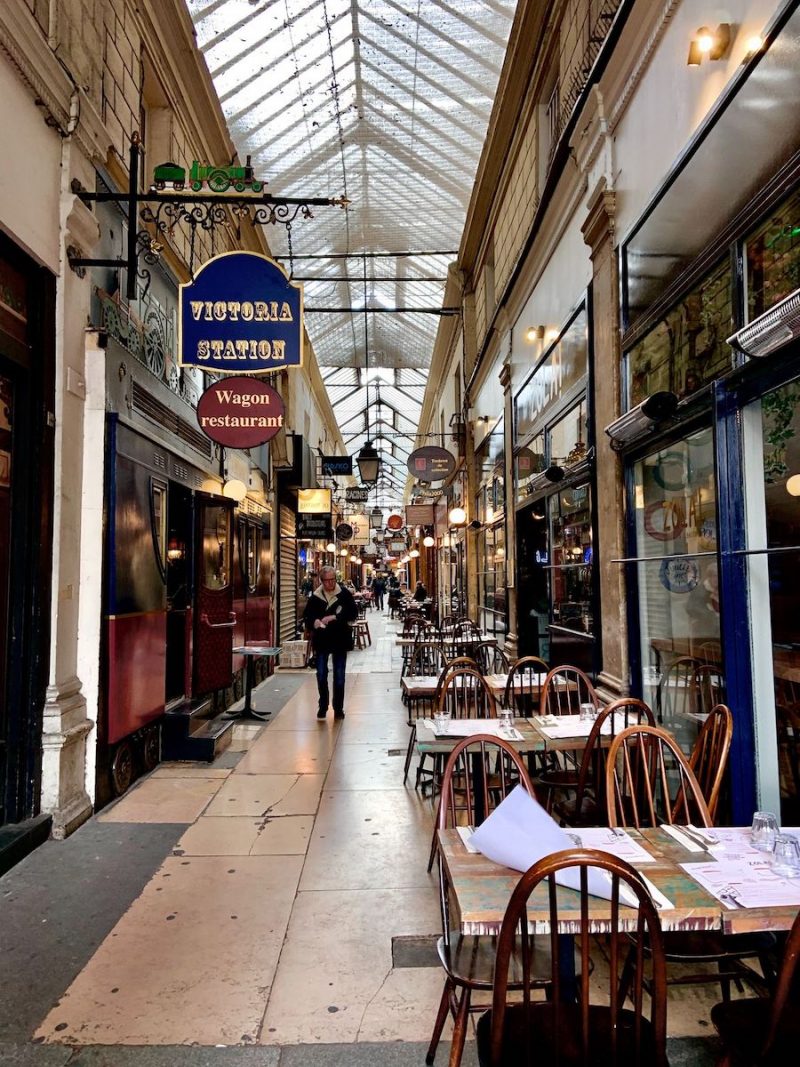Medieval Paris: Where to See Remnants of a Past Time
Culture Travel may earn a commission through links on this website. As an Amazon Associate, we earn from qualifying purchases.
In the heart of modern Paris, where bustling streets echo with the symphony of contemporary life, there lies a hidden layer of history, a whispered narrative of a time shrouded in both mystery and grandeur. As one ventures into the quaint corners of the city, the vibrant resonance of the Middle Ages comes alive, painting the canvas of the present with hues of the past.
This journey is an invitation to step into a world where architecture speaks volumes and cobblestone streets tell tales of medieval splendor. Join me, as we unravel the secrets of medieval Paris, a haven where time stands still, offering glimpses of a period where knights, nobles, and artisans breathed life into a rich and diverse cultural tapestry.
On this voyage through time, we’ll retrace the steps of those who once walked the alleys and boulevards of a city that has gracefully aged, embracing its glorious past.
Medieval Life in Paris
Life in Medieval Paris, stretching from the 5th to the late 15th century, was deeply intertwined with religious, political, and cultural developments of the time. The early part of this period saw Paris evolving from a Roman settlement into a burgeoning Christian city, with churches and religious institutions established.
Society was generally structured in a hierarchical manner, comprising the nobility, clergy, and the common people or peasants. While the nobility and the clergy enjoyed certain privileges, the majority of the population was engaged in agriculture and various crafts, leading lives grounded in hard work and piety.
Paris during this time was not just a political center but also an intellectual hub, especially with the founding of the Sorbonne University of Paris in 1257, attracting scholars and thinkers from various parts of Europe.
As the city grew, so did its commercial activities, turning it into a bustling trade center. Markets were often held in close proximity to the churches, becoming a significant aspect of daily life where people gathered for trading goods and social interaction. This era saw the rise of guilds, which were associations of artisans and merchants controlling the practice of their craft in the city, maintaining standards, and protecting the interests of their members.
Life during this period also had its adversities, including occasional famines, plagues, and conflicts, which sometimes made living conditions harsh and precarious. The Hundred Years’ War (1337-1453) and the Siege of Paris in 1429 brought significant hardship to Paris, with the city experiencing assault and occupation from England.
Despite these challenges, Medieval Paris witnessed significant architectural and cultural flourishes. The construction of iconic Gothic structures was a testament to the city’s growing influence and wealth.
Art and literature thrived with an emphasis on religious themes, but gradually, romantic and chivalric narratives also found a place in Parisian culture, leaving a lasting legacy.
Medieval Architecture in Paris
In the mid-19th century, Georges-Eugène Haussmann undertook a vast urban renewal project in Paris from 1853 to 1870. This period of transformation, often referred to as the Haussmannization of Paris, saw the dismantling of much of the medieval infrastructure that characterized the city until then.
The primary motivation behind this massive restructuring was to modernize Paris. The narrow, winding streets and overcrowded neighborhoods of medieval Paris were seen as impediments to the city’s progress, fostering unsanitary conditions and facilitating the spread of diseases.
While this transformation brought Paris into a new age of prosperity and prominence as a global city, it also led to the loss of a significant part of its medieval heritage, as many historic neighborhoods and architectural masterpieces were demolished to make way for the new developments.
In Paris, a few opportunities to witness the grandeur of medieval architecture still remain, which carries the stories and the craftsmanship of a bygone period.
Arènes de Lutèce
The Arènes de Lutèce, situated in the Latin Quarter of Paris, is a historic Roman amphitheater. Built in the 1st century AD, it could host up to 15,000 spectators for various events. Though partially destroyed in the 3rd century, it was rediscovered and excavated in the 1860s. Now it serves as a public park, where anyone can explore remnants of Paris’ Roman history. It’s a prime example of the architectural ingenuity of the Roman era in Paris.
Abbey of Saint-Germain-des-Prés
The Abbey of Saint-Germain-des-Prés, founded in the 6th century, is one of France’s oldest Benedictine abbeys and the oldest church in Paris. After a series of destructions by the Vikings, reconstruction began in 950. Initially a prominent spiritual and scholarly center, it melded Romanesque and Gothic architectural styles as the centuries progressed.
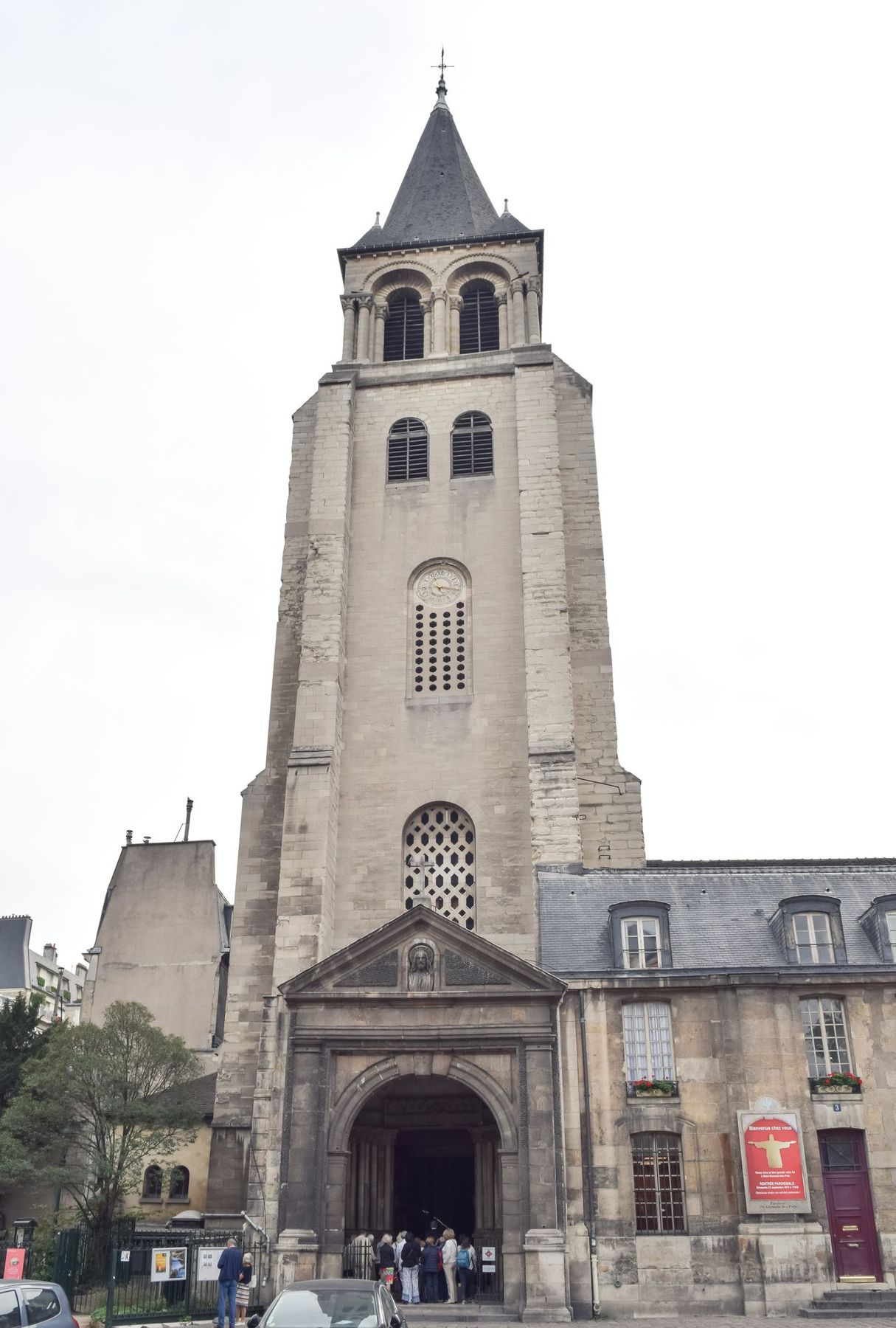
Much of its original structure was destroyed during the French Revolution, leaving only the church relatively intact. Today, it stands as a significant representation of Paris’ medieval history and architectural evolution. It’s easy to appreciate the church’s rich heritage amidst the modern city landscape.
Thermes de Cluny
The Thermes de Cluny, located in Paris, are well-preserved Gallo-Roman thermal baths dating back to the 3rd century. Adjacent to it, the Musée de Cluny hosts an impressive collection of medieval artifacts and art. The museum is housed in a 15th-century Gothic mansion, adding a layer of historical depth to the site. Together, they offer a glimpse into Paris’ Roman and medieval past. It’s a must-visit spot for history buffs and lovers of medieval architecture.
Notre Dame Cathedral
One of the foremost places to start would be the iconic Notre Dame Cathedral, which stands as a masterpiece of Gothic architecture with its splendid façade.

The construction of the Notre Dame Cathedral, a paragon of medieval Paris, commenced in 1163 and largely concluded by 1260. Situated on Île de la Cité, it stands as a testament to medieval ingenuity with its spectacular flying buttresses, intricate sculptures, and awe-inspiring rose windows that dapple the interiors with celestial light.
Throughout its existence, Notre Dame has played a pivotal role in French history, as a religious edifice and a beacon of national pride, resilience, and artistry, epitomizing medieval Parisian culture.
Sainte-Chapelle
Nearby, you can find the Sainte-Chapelle, commissioned by King Louis IX and constructed in a remarkably short span of time, from 1238 to 1248, to house precious Christian relics, including the Crown of Thorns.
Within the Palais de la Cité, its most striking feature is the stunning display of 15 towering stained glass windows, which narrate biblical stories in vibrant colors, showcasing the pinnacle of medieval artistry.
As a radiant beacon of the Rayonnant Gothic period, it illustrates the majesty and spiritual fervor of medieval Paris, serving as both a royal chapel and a reminder of the monarch’s role as the protector of Christianity.
Conciergerie
Venturing to the Île de la Cité, you can explore the Conciergerie. Initially established as a royal palace for the Kings of France in the 6th century and called Palais de la Cité, it underwent significant expansions in the 13th century, transforming into a grand complex under the reign of King Philip IV. Its transition from a royal palace to a prison in the 14th century marked a pivotal shift, notably housing prisoners like Marie Antoinette during the French Revolution.

As one of the extraordinary remnants of medieval Paris, the Conciergerie showcases a blend of Gothic and Romanesque architectural styles, bearing silent witness to centuries of Parisian history and embodying the shifts in societal roles and functions over time.
Hôtel de Sens
The Hôtel de Sens is one of the few remaining medieval residences in Paris. This architectural gem was built between 1475 and 1507, initially serving as a private residence for the archbishops of Sens. Its design is a marvelous showcase of late Gothic and early Renaissance architectural elements, featuring turrets, moats, and a grand entrance embellished with intricate sculptures.
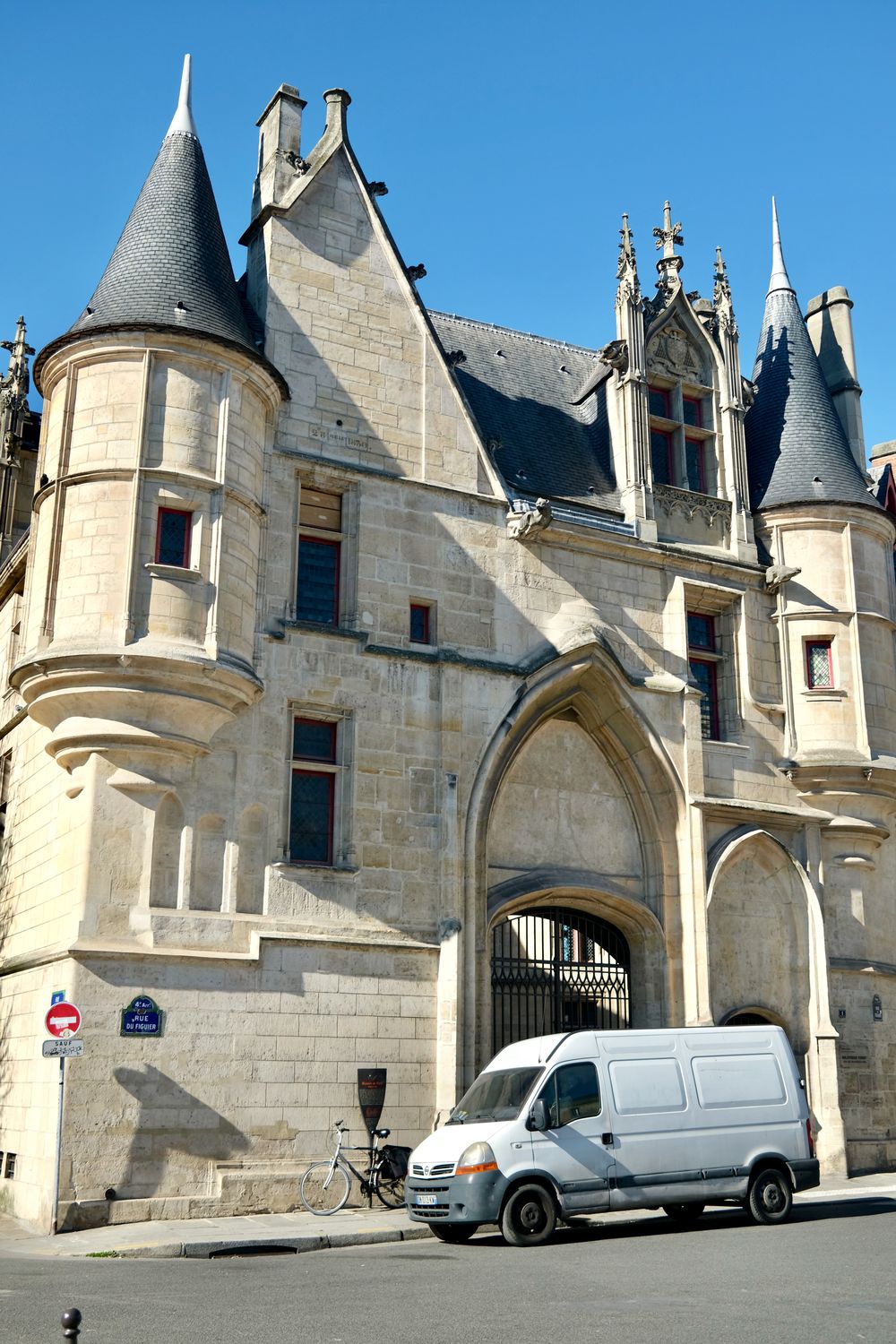
The Hôtel de Sens has undergone numerous transformations, having served various purposes including functioning as a royal residence. Notably, it was the home of Marguerite de Valois, also known as Queen Margot, after her annulment from King Henry IV of France.
After an extensive restoration to revive its medieval grandeur, since 1961, it has housed the Bibliothèque Forney, a library focusing on decorative arts and crafts.
Basilique Saint-Denis
Just a town further north of Paris stands Basilique Saint-Denis which marks the beginning of Gothic architecture, boasting remarkable sculptures and tombs of French kings. Construction began in 1135.
1 Rue de la Légion d’Honneur, 93200 Saint-Denis, France
Under the direction of Emperor Napoleon III, Haussmann’s redevelopment drastically changed the face of Paris, giving it the harmonious and iconic appearance that we associate with the city today, albeit at the cost of erasing much of its ancient character and charm.
While walking through the cobbled streets of Paris, keep an eye out for scattered remnants of medieval architecture, including old walls and buildings that have preserved the essence of that era, a glimpse into the layered history that Paris harbors in every nook and cranny.
Joan of Arc
One of the most well-known figures from Medieval times in France was Jeanne d’Arc, or Joan of Arc.
Joan of Arc played a crucial role in the history of France, particularly during the latter phase of the Hundred Years’ War, a conflict waged from 1337 to 1453 between the Kingdoms of England and France.
Born around 1412 in Domrémy, a village in northeastern France, Joan emerged as a figure of immense significance in the early 15th century.
Around the age of 17, propelled by visions and voices she claimed were from saints, Joan embarked on a divine mission to save France from English domination and to ensure the coronation of Charles VII as the King of France.
In 1429, she managed to convince Charles VII to let her lead a French army to relieve the besieged city of Orléans, which was a pivotal English stronghold at that time.
Under her guidance, the French forces succeeded in lifting the siege of Orléans in just 9 days, a victory and a significant turning point in the war that bolstered the morale of the French troops. This triumph was followed by a series of rapid successes against the English forces, creating a pathway for Charles VII to be crowned King in Reims, a traditional coronation site for French monarchs, solidifying his legitimacy.
However, Joan’s meteoric rise was met with a tragic end. In 1430, she was captured by a Burgundian faction, allies of the English, and was later handed over to the English forces.
After a politically charged trial, where she was accused of heresy and witchcraft, Joan was sentenced to death. In 1431, at the age of 19, she was burned at the stake, marking the end of her short but historically significant journey.
Despite her tragic end, Joan’s legacy lived on. Nearly two decades later, the war ended with a French victory, and in 1456, a posthumous retrial cleared Joan of all charges.
Joan’s unwavering faith, courage, and determination have made her a national heroine, embodying the spirit of resistance and patriotism. She was canonized as a saint by the Catholic Church in 1920, cementing her status as a symbol of French unity and resistance against oppression.
